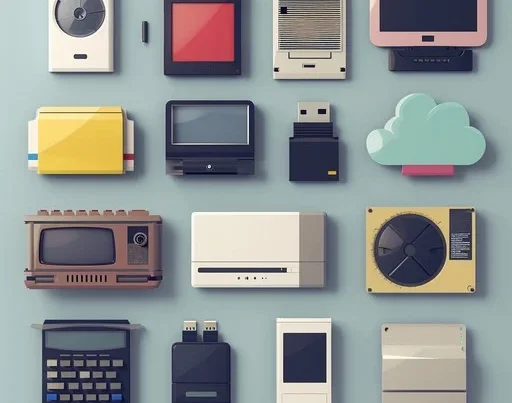Many small business owners hold onto their old computers, software, or servers thinking,
“If it ain’t broke, don’t fix it.”
But here’s the truth: outdated technology is quietly draining your budget, exposing you to security risks, and hurting your team’s productivity.
Let’s break down why running your business on old tech is more expensive than you think — and what you can do about it.
1. Lost Productivity = Lost Profits
When your team wastes time waiting for slow computers, outdated software to load, or printers to cooperate, you’re not just dealing with frustration — you’re losing money.
Let’s say an employee wastes just 15 minutes a day on tech issues. That’s over 60 hours a year — per person. Multiply that by your team size, and suddenly “saving money” on tech isn’t saving you anything at all.
2. Higher Maintenance & Repair Costs
Old equipment breaks more often. Whether it’s a laptop from 2014 or a local server held together by duct tape and prayer, older tech needs more frequent (and often pricier) repairs.
Even worse? Replacement parts are harder to find — and sometimes cost more than just upgrading.
3. Security Risks Multiply Over Time
Old operating systems and software eventually stop receiving security updates. That means:
No protection against new malware
Increased vulnerability to ransomware
Compliance issues with regulations like HIPAA or data privacy laws
Cybercriminals specifically target businesses running outdated tech because they know the doors are wide open.
4. Compatibility Issues Slow You Down
New apps, tools, and integrations are built for modern systems. If your team is using outdated versions of Microsoft Office or still running Windows 7, they may struggle to collaborate with partners or clients who’ve moved on.
This creates friction, lost time, and sometimes even lost business opportunities.
5. Missed Opportunities for Automation
Modern IT tools can automate everything from file backups and invoicing to email routing and client communication. But if your systems are too old to support these tools, you’re missing out on serious efficiency gains — and wasting manpower on tasks that could be automated.
6. Poor User Experience for Clients
Slow or outdated customer-facing tools — like an old website, a clunky payment system, or a laggy client portal — send a message:
“We’re behind the times.”
Clients notice. And they may take their business elsewhere.
7. You’re Delaying the Inevitable
All tech has a shelf life. The longer you wait, the more urgent (and expensive) the upgrade becomes. Planning an upgrade now means you can budget, prepare, and train your staff — rather than scramble during a crisis.
What Should You Replace First?
Not everything needs to go at once. Start here:
✅ Any device over 5–6 years old
✅ Software that’s no longer supported
✅ Servers or networking gear that frequently crashes
✅ Antivirus or firewalls without current protection
Then build a plan to modernize gradually — in a way that fits your budget and goals.





